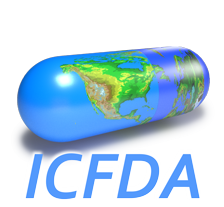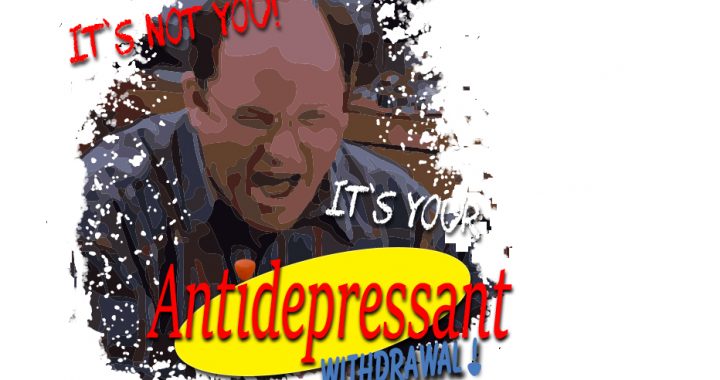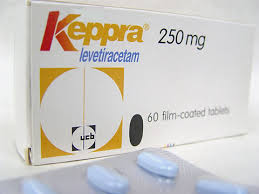If you have or know of teens or pre-teens struggling with depression or hopelessness, or if you know someone on anti-depressants, I hope this account will help you. I believe that if I had read a story like the one you will now read, it might very well have saved our son. My wife would still have her little boy. My daughter would still have her little brother. And I would still have my best companion and friend in the whole wide world.
Matthew Miller
2/16/84–7/28/97
It was unusually cool for the last day of July. The sun was bright, and there were only a few scattered clouds. The gentle winds that took the teenager’s balloons skyward also helped dry our tears as we said good-bye to Matt.
This moment, as hundreds of his family and friends gathered under the shade of a gentle oak which now shelters his grave, was by far the cruelest and hardest of our lives. For until these last few days, my wife Cheryl and I had been so very blessed. We had two wonderful children. Our daughter Jenny had just turned 15 only a couple weeks earlier. We were all healthy, safe and so untouched by any real understanding of pain and sorrow. Surely, our pastor in delivering those final words must have been talking about someone else. Not our Matt.
Matt was only 13. He had never gone on a real date. Never driven a car. And never been away from home for more than a few nights at a time with friends.
He weighed exactly one hundred pounds. I know, because he was so proud of that all-important milestone in any boy’s life, he bragged to me about it just a few days before.
Yet now he was gone. Forever. Without so much as a good-bye. A hug. Or even a note.
This is his story. And I summon the courage to tell it only because I know he would want me to. And because the good Lord who now holds our Matt so tightly in his arms has asked me to.
But, as I said, he was 13. And many changes were taking place in his life. Not the least of which was our move to a new neighborhood, and a new school.
So, like most parents, we felt that his periods of moodiness and sullen behavior were not all that unusual for a young teenager. He was trying to make new friends in a new situation. He was going through many physical changes. (We noticed only recently that his voice had dropped about an octave, and that he was working far too hard to keep it there.)
By the end of his first year in a new middle school, his teachers and counselors recommended that Matt find some professional help over the summer. They knew he was smart, yet they saw problems with his grades. And they were worried that his withdrawn demeanor might be more than just a passing “teenage” phase, and could have a more deep-seated cause.
Now let me be quick to add that Matt was never violent. Never disrespectful. Nor ever a real threat, to anyone. He had a warm sense of humor, a love of friendship and heart of solid gold that his friends who knew him well, loved in him. He had a special way with little children. He would have been a wonderful father.
But together, believing what we were doing was the right thing, we began a brief, but tragic journey with Matt into a world we didn’t understand–the world of professional psychiatry and legalized mind-altering medications. An unfamiliar world with its own rules. Its own accepted procedures. And its own arrogance.
“Here, let’s try these for a week. ”
I remembered thinking at the time, how wonderful. It was only our second visit to the psychiatrist, and already the good doctor knew exactly how to help our son. It was all so easy. There was a terrific new medication available that was already helping millions with depression. The fact that we had never heard of it, didn’t matter. We weren’t doctors. And we never had to deal with depression on such personal terms before.
The drug was one of the new breed of anti-depressants. They’ve only been on the market for a few years, and they’re the ones you read about now all the time. Prozac is one of the them. So is Paxil. But the sample bottle that we were handed had a blue label, contained only seven tiny 50-mg capsules and was called Zoloft.
What we have since learned about Zoloft and related medications fills volumes. But the top line is simply this–today, doctors and psychiatrists are increasingly willing to use powerful and dangerous pills that dramatically change chemical balances in the brain. We don’t know all the answers, but we do know what happened to our son. And, we know that when things go wrong, they can go terribly wrong.
The Brain. Think about it. It’s the seat of everything that makes us human. It allows us to think and move and experience pain and joy and makes us who we are. The brain is not just any organ in the hierarchy of organs, it is the organ. The single most powerful and mysterious creation in God’s Universe. Its complexity in unfathomable, containing more than one hundred billion cells and over a trillion connections!
Now if your doctor ever tells he understands exactly what these drugs do in your brain, I will tell you this: He is lying. Because those who know the most, admit they don’t know. They experiment and they guess. But that’s about it.
And if your doctor offers what has become the standard line about depression having real physical causes, that chemical balances need to be brought back to within normal levels, or that you’re not generating enough serotonin to ever feel happy, stop him right there! Ask him these questions.
What is normal? And how do I know that my chemical balances aren’t normal? How do I know that this drug will make them normal? And what if, just maybe, I’m unhappy about real problems in my life?
Most likely, however, your doctor will tell you little or nothing. Ours didn’t. Because the truth is, they neither understand, nor are they willing to explain what these drugs can do and have done to countless of thousands, once they take control of the processes in the brain.
We like to think of our doctors as highly skilled technicians. I know that Cheryl and I did. We hope and pray that they can adjust our chemistry much like a skilled mechanic fine tunes a sports car. But Dr. Peter Breggin, a psychiatrist whom Time Magazine calls “Prozac’s Worst Enemy,” points out in his book, it is more like a “clumsy office colleague spilling coffee on your computer. Except that your brain is far more vulnerable and easily damaged.”
Our doctor simply said try these pills for a week.
We didn’t have a week.
Our Son Didn’t Want to Die
I can’t believe our son wanted to die. I never will.
Yet sometime during the night after taking his seventh capsule of Zoloft, he got out of bed, entered his closet and quietly left us. We never heard a sound even though our room shared an adjacent wall.
He did not leave a note. He had never threatened suicide. He never talked about it. He indicated in his doctor’s office just a week before, he would never consider suicide an option. He never gave us any indication that he had been thinking about it. I honestly don’t believe he had thought about it, until something happened inside his tortured mind that night.
There was no cry for help. No scream. Nothing…but that single, fateful, horrifying and irreversible act.
We were leaving on a long-anticipated family vacation the next morning. Matt, although he hated long drives, had been looking forwarding to jet skiing at the Wisconsin resort where we had reserved a room overlooking Lake Michigan. He had just purchased a new GameBoy and his all-time favorite Zelda game. He had just told his girl friend that very evening that he would call her from Wisconsin in a few days.
For a bright, healthy and loved young man, Matt had every reason to live. Yet under the power of this debilitating drug, he found a way to die. We know it was not our Matt who took his own life. This was a Matt “high” on a legalized pill. Reality and nightmares became indistinguishable for him. His world–the universe that was his chemically stimulated, serotonin-enriched, emotionally-tortured brain—came crashing down around him with such ferocity, he had no way out.
What we now know to have happened, from published research, phone calls, and e-mail with leading authors in this field, is that our son suffered drug-induced “akathisia” which led to the mania which caused his death. Akathisia is simply an uncontrollable agitation or restlessness brought about by the stimulant nature of the drug. We all noticed that Matt had become especially hyperactive that last day. His sister complained that Matt was being loud and bothering her more than normal. His grandmother who was visiting remarked that Matt could hardly sit still through our Sunday brunch.
Mania is a well-documented side effect with SSRI use. And what we didn’t know is that in depressed people, this mania is often the trigger that leads to suicidal thoughts and actions. Depression in and of itself rarely accounts for suicide. Zoloft, in Matt’s case, was like throwing a match onto gasoline. It’s exactly this reaction that prompts many doctors to also prescribe a sedative along with anti-depressants in the initial stages of treatment. We were so ignorant.
Matt was a victim. And, as we soon found out, there have been many, many others before him. Yet few people are aware of just how troubled a past these drugs have had. Few parents are aware. Few patients are aware. And most frightening of all, few doctors are aware, including Matt’s psychiatrist.
A Short Course in SSRI’s
I didn’t know what these initials stood for until about a week after Matt’s death. Technically, this family of drugs is called Selective Serotonin Reuptake Inhibitors. I now have my own interpretation of this acronym–Stop. Scream. And Run Instead.
Dr. Ann Tracy, a Ph.D. in psychology and health sciences, National Director for the International Coalition of Drug Awareness and a tireless researcher into these drugs, compares them to many of the illegal psychotropic drugs being pushed on street corner–drugs like “speed,” cocaine or LSD. (She is also quick to add that at least these are sold without the pretense or hypocrisy of being good for you.) Dr. Peter Breggin, Director for the Center of the Study of Psychiatry simply says the new anti-depressants have a “dark side.”
The FDA keeps records on adverse drug reactions. It’s a purely voluntary system so it probably under-reports the magnitude of the real problem (some suggest it could miss as many as 90% of the cases!), but still the numbers are compelling.
Jane Heimlich, in Health and Healing, states, “Prozac has the distinction of having the most ADR’s [adverse drug reactions] in history.” And you need to realize that these drugs have only been around for less than a decade!
As of October, 1993, during only the first two years of Prozac’s marketing, over 28,000 complaints of adverse side effects had been filed with the FDA, including nearly 2,000 suicide attempts. 1,300 deaths were reported. As of last year (1996), the number of complaints has risen to 36,000. To put this in perspective, consider that Elavil, another anti-depressant has received only a tenth as many, with just 2,000 complaints in its entire 20 years on the market.
However, it’s the tragic stories behind these numbers that are the real eye-openers. Besides Matt’s, there are many, many more. And, in a way, we were lucky. These drugs are present in patients who have committed some of the most violent, unpredictable and disturbing crimes and suicides you could ever imagine.
“But if they weren’t safe, they couldn’t prescribe them.”
My wife made this observation. My friends have. We want to believe we are protected from these drugs.
But consider that LSD was once legal. In the 1950’s it was promoted by Eli Lilly as an aid to psychoanalysis, a cure for alcoholism and a way to clear up mental illness. PCP, now referred to as Angel Dust, was legal. It was marketed by Parke, Davis & Company as Serynl, an analgesic, or painkiller! Thalidomide, the horror drug of the 50’s that directly caused the tragic deformed births of over 5,000 newborns, many without limbs, was also a legal drug. It was marketed as a sleeping pill. And most recently, Redux and Fen-Phen were legal. Millions of people, mostly women, now face heart valve problems and a perilous withdrawal as these drugs are removed from shelves. Each of these drugs was tested in the marketplace before being recalled. Yet many remain in today’s drug counterculture as a gift to the world from the same manufacturers creating new pills today.
There is a long history of today’s pharmaceutical companies rushing drugs through testing and through FDA approval only to find out later that severe adverse reactions occur in the real world. (Did you know that drug companies test their own drugs for the FDA?) In the case of Prozac, it was approved on the basis of only seventeen studies over the course of just four to six weeks. Although they will tell that thousands of people were tested in this phase, it is fact that just fewer than 300 people were exposed to this drug in these trials!
And don’t believe for a moment this is an isolated incident of one drug slipping through the cracks. In 1990, the General Accounting Office, a congressional watchdog agency, reviewed all the drugs approved by FDA between 1976 and 1985. It found that 102 out of 198 drugs turned out to have “serious post approval risks.” The rate was even higher for psychiatric drugs. (Nine out of 15.)
And you need to understand that 80% of the drugs marketed in the United States today are not approved by the FDA for use by children under twelve. Studies simply have not been done to sufficiently document their safety and efficacy in this age group. And consequently, their use in treating children is solely up to the discretion of the physician. Appallingly, Eli Lilly is going ahead with plans to market Prozac in peppermint and other assorted flavors to make the drug more attractive as a children’s medication!
Today, over 17 million people now take some kind of SSRI medication. They’re taking it for everything from insomnia to acne to weight loss to alcohol addiction. And the two largest manufacturers, Eli Lilly (Prozac) and Pfizer (Zoloft) now have worldwide revenues of $2.6 billion and $1.6 billion respectively.
So how can a drug be so successful, and yet so dangerous? This is the question I set to out to answer for myself. And I believe the answer lies in our own willingness to believe that there’s a quick solution for everything.
We want to believe in miracles. We want something for nothing. And if you would believe the ads currently running for Prozac, it’s all yours for the taking. When a cloud hangs overhead, there’s sunshine in a bottle.
It’s so easy. It’s so deceiving.
What Can You Do?
Educate yourself. Ask questions about the drugs your doctor prescribes. Trust in yourself. Trust in God. But don’t believe in miracles.
Our veterinarian gave us five pages of information on medication prescribed for our dog’s stomach problems. We received nothing that would help us understand Zoloft. There was no discussion about alternative treatments, which should have included the most common-sense approach of preliminary counseling and therapy. The diagnosis was quick (we assume our doctor found “depression” although we were never informed what Matt was being treated for).
Please do not allow this to happen to yourself or a loved one. The primary role of these medications is to change the way your brain functions. It’s a drug that creates abnormalities. It doesn’t correct them.
So be aware. Learn from our pain. Please understand that depression is a potentially life-threatening illness. Be an alarmist. And don’t allow anyone in your family to take any prescription drug that you know little about.
Don’t be afraid to just say no.
We will sleep better knowing that Matt’s life which meant so much to those who knew him, could perhaps someday mean the difference between life and death for yourself or a loved one.
[Matthew Miller was a student at Harmony Middle School in Overland Park, Kansas and had previously been a student at Mill Creek Elementary in Lenexa. If you wish to make a contribution to his memorial fund, please send it to Matthew Miller’s Memorial, care of his church, The Church of the Resurrection, 13720 Roe Avenue, Leawood, KS 66215.]
Mark and Cheryl Miller can be reached at mmiller18@kc.rr.com
11/1/1997
Years 2000 and Prior
This is Survivor Story number 36.
Total number of stories in current database is 96




